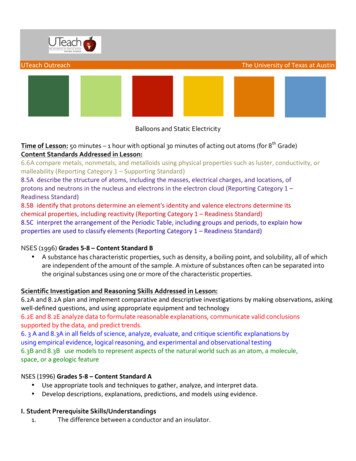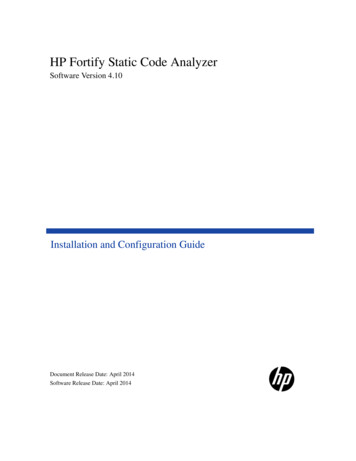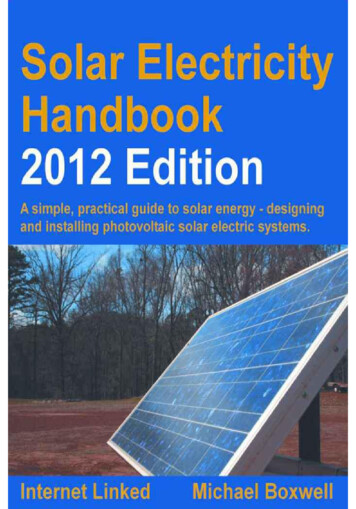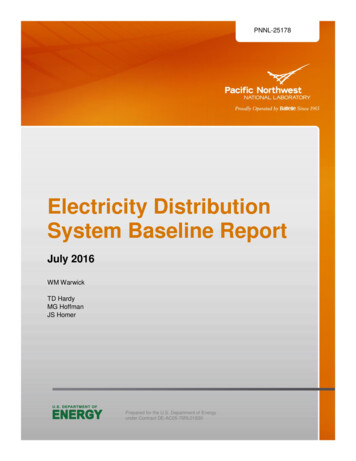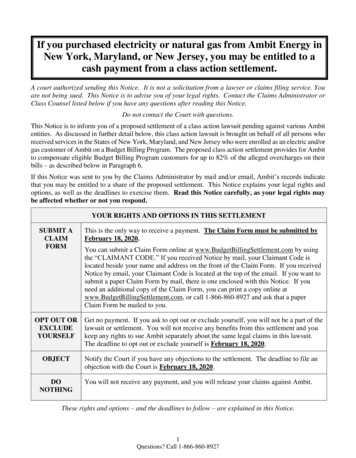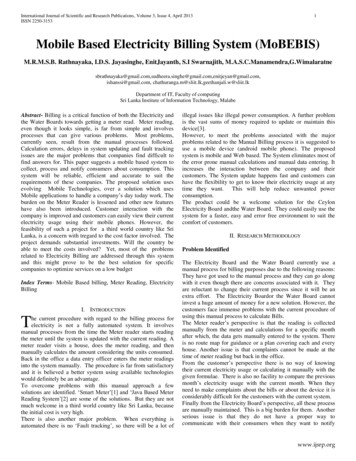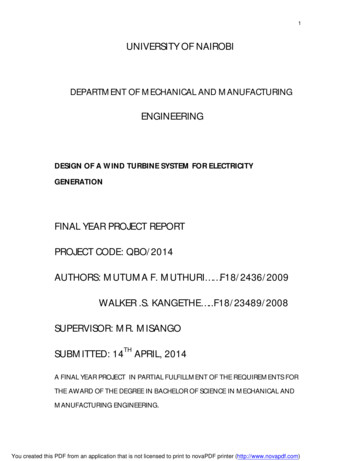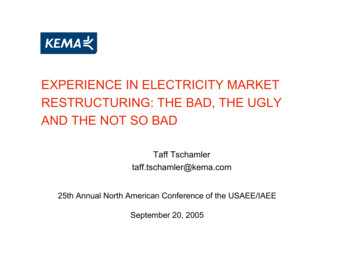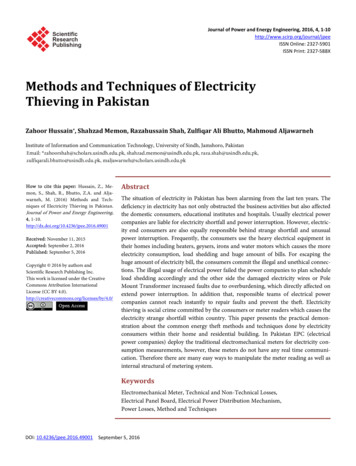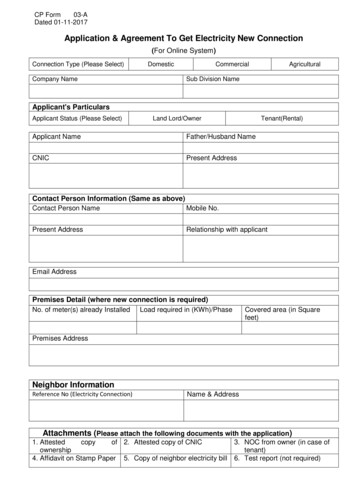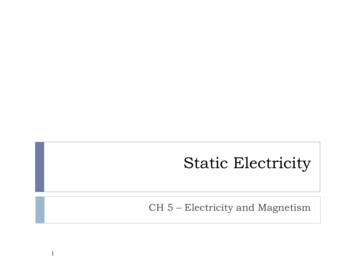
Transcription
Static ElectricityCH 5 – Electricity and Magnetism1
Van de Graaff Generator2
3
PhET Sim ndstatic-electricity Billhttps://www.youtube.com/watch?v oU8Fe6846d4 4
Triboelectric EffectGreeks Other MediteraneanAmber Fur Attracts FeathersNew Latin word electricus ("of amber" or "like amber",from ἤλεκτρον, elektron, the Greek word for "amber") t 5
Static Electricity Def: Related to electrical charges at rest, within or on thesurface of a material. These can be the result of atemporary movement of electrons from one substance toanother Generally, substances are found in a neutral state (same #of and -). When electrons move from one substanceto another the materials become charged.We will discuss dynamic electricity later in the ns-andstatic-electricity 6
Charging ObjectsBalloon 7
Rules1.2.3.4.8There is a positive ( ) and a negative (-) chargeOnly electrons (e-) can moveIf a substance has more protons, it is positivelycharged. If it has more electrons, it is negativelycharged.To become neutral again, a substance will lose or gainelectrons
Rules1.2.3.4.9Alike charges repel, opposites attractFriction (rubbing) causes the electrons to be passedonTouching passes on the chargeA charged substance can attract a neutral substancebecause the protons will align with the electrons
10
11
P. 148 table 5.18 is a good summary of the methods ofcharging12
13
Electrostatic Series Triboelectric seriesGives a hierarchy of substances and their ability to loseand gain electrons.An object above another object will gain electrons fromthe ones below it.Must memorize: (eh not really. Sorta) plastic will alwaysgain electrons and be negatively charged. Glass willalways lose electrons and become positively charged.14
Example PlasticGoldWoodCottonPaperGlass Rub: plastic and woodrub: gold and paper 1- What happens if plastic and paper come close?2- Gold and plastic?3- Wood and paper?15
Static Electricity 6 Def: Related to electrical charges at rest, within or on the surface of a material. These can be the result of a temporary movement of electrons from one substance to another Generally, substances are found in a neutral state (same # of and -).
